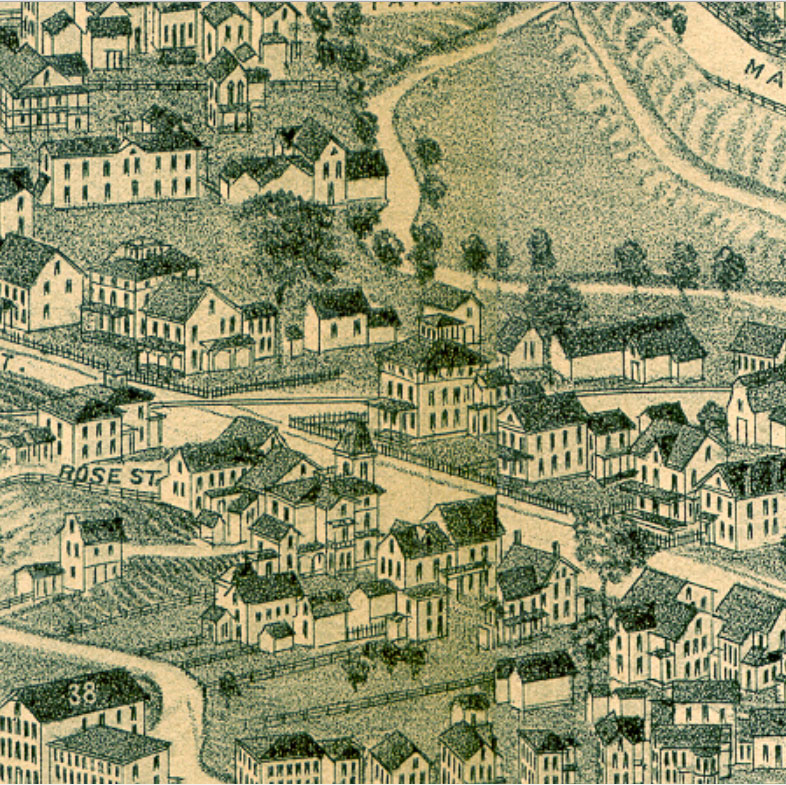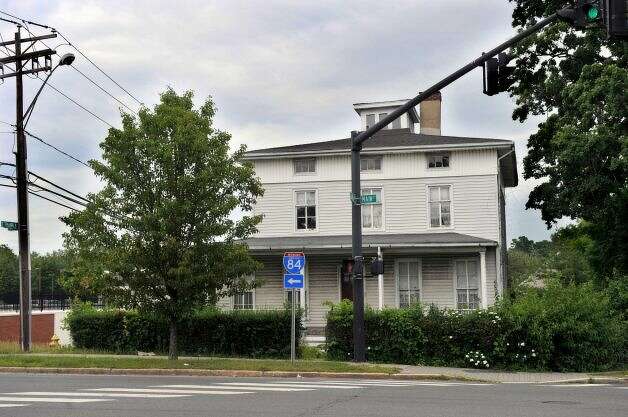An exhibit of items from the WCSU Archives’ collections. In the Haas Library Atrium until the end of the semester.
In conjunction with Veterans’ Day and the World War I Centennial, Western Connecticut State University Archives presents “100 Years Since the First World War” exhibit on view through December 17, 2014. This exhibit features three cases of material from the archives’ collection. From political cartoons to memorials, the pieces included in this exhibit provide a fascinating glimpse into America during the First World War. See online exhibit.
Woodrow Wilson in August of 1914:
“The effect of the war upon the United States will depend upon what American citizens say and do. Every man who really loves America will act and speak in the true spirit of neutrality, which is the spirit of impartiality and fairness and friendliness to all concerned. The spirit of the Nation in this critical matter will be determined largely by what individuals and society and those gathered in public meetings do and say, upon what newspapers and magazines contain, upon what ministers utter in their pulpits, and men proclaim as their opinions on the street… The people of the United States are drawn from many nations, and chiefly from the nations now at war. It is natural and inevitable that there should be the utmost variety of sympathy and desire among them with regard to the issues and circumstances of the conflict.” *
This battle for the hearts and minds used the printed word, cartoons, illustrations and photographs as the tools to attempt sway public opinion toward militarily and materially supporting the Allies. Roughly 5% of the U.S. population had been born in one of the Central Power countries** and a significant percent more had ties to those countries. It would take until 1917 for the United States commit troops to the trenches in Europe.
These are some examples of printed matter that arose out of attempts to sway public opinion from the collections in the WCSU Archives. It also includes materials that document the war along with letters and personal effects of one of Danbury’s own who died while “over there,” George Bennett Hawley.
Hawley was born on April 27, 1895, in Danbury and was the only child of George M. and Mary Hawley. The young Hawley was a signal man for company B of the 307th Infantry, one of the first AEF units to join the lines of battle in France. He corresponded frequently with his family back in Danbury.
Through these materials, we have a unique glimpse of the period; 100 Years Since the First World War commemorates the efforts of American soldiers and their experiences in war.
* Woodrow Wilson: “Message on Neutrality,” August 19, 1914. Online by Gerhard Peters and John T. Woolley, The American Presidency Project. http://www.presidency.ucsb.edu/ws/?pid=65382
** According to the 1914 Statistical Abstract of the United States – http://www.census.gov/prod/www/statistical_abstract.html








 Dr. Pinou is the Coordinator Secondary Education Science, Herpetology, Snake Systematics at WCSU and was awarded the “Excellence in Teaching” Award by the WCSU Chapter of the National Society of Leadership and Success in the spring of 2014. When Dr. Pinou was a student, Herndon Dowling was her teacher and mentor in herpetology. Dowling’s seventy years of herpetological field studies took him to Mexico, through the United States, Galapagos Islands, Burma, Germany, and India. He was a snake systematist with major interests in snake morphology and its influence upon snake evolution. In addition to fieldwork, Dowling spent much time in museums and working with herpetological collections observing, recording, and analyzing specimens. His notes include measurements, detailed scale counts, osteology, hemipenes, coloration, behavior, and patterning where possible. It is estimated that Dowling examined and recorded data from nearly all known snake lineages and genera. His notes and documentation are unique and invaluable to the field of herpetology.
Dr. Pinou is the Coordinator Secondary Education Science, Herpetology, Snake Systematics at WCSU and was awarded the “Excellence in Teaching” Award by the WCSU Chapter of the National Society of Leadership and Success in the spring of 2014. When Dr. Pinou was a student, Herndon Dowling was her teacher and mentor in herpetology. Dowling’s seventy years of herpetological field studies took him to Mexico, through the United States, Galapagos Islands, Burma, Germany, and India. He was a snake systematist with major interests in snake morphology and its influence upon snake evolution. In addition to fieldwork, Dowling spent much time in museums and working with herpetological collections observing, recording, and analyzing specimens. His notes include measurements, detailed scale counts, osteology, hemipenes, coloration, behavior, and patterning where possible. It is estimated that Dowling examined and recorded data from nearly all known snake lineages and genera. His notes and documentation are unique and invaluable to the field of herpetology.

 The City of Danbury has torn down a home built in 1837.
The City of Danbury has torn down a home built in 1837.





 R. Allen Hermes (1913 – 2004) was born in England and came to the United States at 16. He attended school in Buffalo where he won a national poster which entitled him to a four-year scholarship at Syracuse University. He graduated with honors with a degree in fine arts and the Hazard Fellowship, which afforded him a year to study art and architecture in Germany. In 1942 Hermes married Helen Davis, daughter of Dwight Davis who served as Secretary of War in the Coolidge administration and founded the Davis Cup tennis tournament. During World War II, Hermes served in Europe with the Corps of Engineers, during which he spent time painting his fellow peers and officers. After the war, Hermes and his wife Helen settled in Redding, CT where he continued to paint and teach, displaying his art in Silvermine, New York and the Wooster Gallery in Danbury. Hermes’ style encompassed a variety of subjects ranging from still life and landscapers to mythology and religious themes. Stylistically, he described his own paintings as being “closest to Baroque.”
R. Allen Hermes (1913 – 2004) was born in England and came to the United States at 16. He attended school in Buffalo where he won a national poster which entitled him to a four-year scholarship at Syracuse University. He graduated with honors with a degree in fine arts and the Hazard Fellowship, which afforded him a year to study art and architecture in Germany. In 1942 Hermes married Helen Davis, daughter of Dwight Davis who served as Secretary of War in the Coolidge administration and founded the Davis Cup tennis tournament. During World War II, Hermes served in Europe with the Corps of Engineers, during which he spent time painting his fellow peers and officers. After the war, Hermes and his wife Helen settled in Redding, CT where he continued to paint and teach, displaying his art in Silvermine, New York and the Wooster Gallery in Danbury. Hermes’ style encompassed a variety of subjects ranging from still life and landscapers to mythology and religious themes. Stylistically, he described his own paintings as being “closest to Baroque.”


